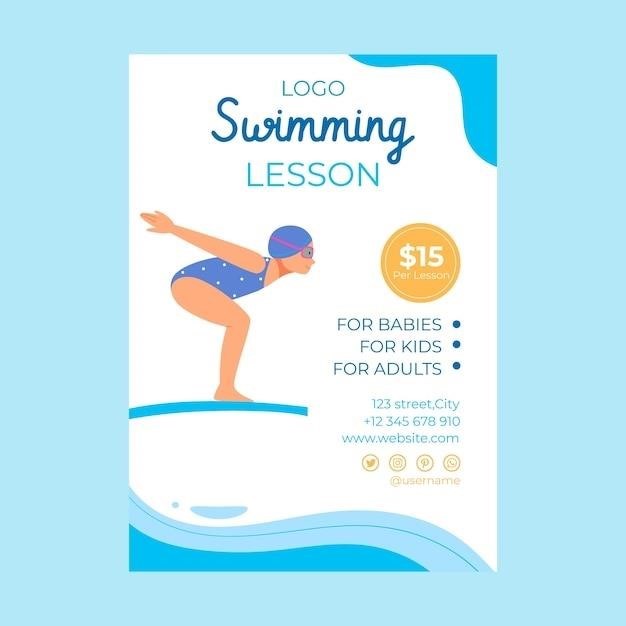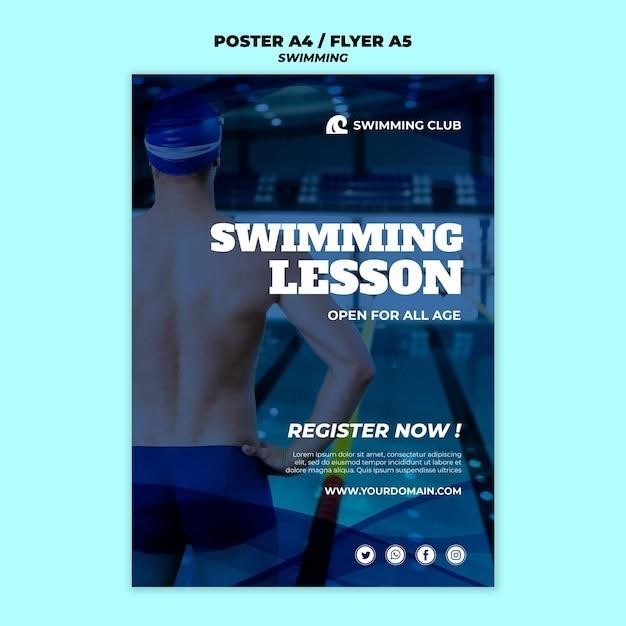A Business Credit Application Form is a document used by businesses to apply for credit from lenders or suppliers․ This Credit Application Form collects essential information about the business’s financial status‚ credit history‚ and repayment ability․ It helps lenders assess the risk and determine the creditworthiness of the applicant․
What is a Business Credit Application Form?
A Business Credit Application Form is a crucial document in the B2B (business-to-business) world‚ serving as a bridge between businesses seeking credit and those extending it․ This form acts as a formal request for credit‚ enabling suppliers‚ lenders‚ or financial institutions to evaluate the creditworthiness of a business before granting them access to funding or lines of credit․ It’s essentially a standardized questionnaire designed to gather essential information about a business’s financial health‚ operational history‚ and credit history‚ allowing the creditor to assess the risk involved in extending credit․
Think of it as a financial snapshot of a business‚ outlining its past performance and future prospects․ By completing a Business Credit Application Form‚ businesses provide creditors with the necessary data to make informed decisions about credit approval․ This form is often the first step in the credit application process‚ laying the groundwork for establishing a mutually beneficial business relationship built on trust and transparency․
Key Components of a Business Credit Application Form
A Business Credit Application Form is a structured document designed to gather critical information about a business seeking credit․ While the specific components can vary depending on the lender or supplier‚ the core elements typically include⁚
- Business Information⁚ This section captures the fundamental details of the business‚ such as its legal name‚ address‚ phone number‚ website‚ and tax identification number (TIN)․ It also includes information about the business’s structure (e․g․‚ sole proprietorship‚ partnership‚ LLC) and its primary industry․
- Financial Information⁚ This section focuses on the business’s financial health‚ requesting details about its revenue‚ expenses‚ assets‚ liabilities‚ and cash flow․ It may also inquire about the business’s banking relationships‚ credit lines‚ and any outstanding loans․
- Credit History⁚ This section delves into the business’s past credit performance‚ seeking information about its payment history with other creditors‚ including any instances of late payments or defaults․ It might also ask for references from previous suppliers or lenders․
- Business Owners or Principals⁚ This section gathers information about the individuals who own or manage the business‚ including their names‚ contact information‚ and financial history․
- Credit Terms⁚ This section specifies the desired credit terms‚ including the amount of credit requested‚ the repayment schedule‚ and any applicable interest rates or fees․
By providing this comprehensive information‚ businesses enable creditors to assess their creditworthiness and make informed decisions about extending credit․
Information Required on a Business Credit Application Form
A Business Credit Application Form is designed to gather comprehensive information about a business applying for credit․ The specific data points required can vary depending on the lender or supplier‚ but common elements include⁚
- Business Details⁚ This section requires information about the business’s legal name‚ address‚ phone number‚ website‚ and tax identification number (TIN)․ It also seeks details about the business’s structure (e․g․‚ sole proprietorship‚ partnership‚ LLC) and its primary industry․
- Financial Information⁚ This section focuses on the business’s financial health‚ requesting information about its revenue‚ expenses‚ assets‚ liabilities‚ and cash flow․ It may also inquire about the business’s banking relationships‚ credit lines‚ and any outstanding loans․
- Credit History⁚ This section delves into the business’s past credit performance‚ requesting information about its payment history with other creditors‚ including any instances of late payments or defaults․ It might also ask for references from previous suppliers or lenders․
- Business Owners or Principals⁚ This section gathers information about the individuals who own or manage the business‚ including their names‚ contact information‚ and financial history․
- Credit Terms⁚ This section specifies the desired credit terms‚ including the amount of credit requested‚ the repayment schedule‚ and any applicable interest rates or fees․
By providing this detailed information‚ businesses enable creditors to assess their creditworthiness and make informed decisions about extending credit․

Benefits of Using a Business Credit Application Form
Implementing a standardized Business Credit Application Form brings several benefits to both lenders and borrowers․ Here are some key advantages⁚
- Streamlined Credit Evaluation⁚ A structured application form simplifies the credit evaluation process by ensuring that all essential information is collected consistently and efficiently․ Lenders can quickly assess the business’s financial health and creditworthiness‚ making informed decisions about extending credit․
- Reduced Risk⁚ By gathering comprehensive financial information‚ lenders can identify potential risks associated with extending credit․ This helps minimize the likelihood of defaults or bad debts‚ protecting the lender’s financial interests․
- Improved Customer Experience⁚ A clear and concise application form provides a positive experience for borrowers․ It simplifies the process of applying for credit‚ ensuring clarity and transparency throughout the process․
- Increased Transparency⁚ The use of a standardized form promotes transparency between lenders and borrowers․ Both parties understand the expectations and requirements for applying for and receiving credit․
- Enhanced Efficiency⁚ A standardized application form reduces the need for manual data entry and processing‚ streamlining the credit application process and saving time and resources for both lenders and borrowers․
Overall‚ a Business Credit Application Form facilitates a more efficient‚ transparent‚ and secure credit application process‚ benefiting both businesses and their lenders․
Types of Business Credit Application Forms
Business Credit Application Forms can vary depending on the specific purpose and the type of credit being requested․ Here are some common types⁚
- Trade Credit Applications⁚ These forms are used by businesses to apply for credit from suppliers or vendors․ They typically focus on the business’s purchase history‚ payment terms‚ and financial stability․
- Bank Loan Applications⁚ These forms are used by businesses to apply for loans from banks or other financial institutions․ They require detailed information about the business’s financial history‚ current assets and liabilities‚ and projected cash flows․
- Line of Credit Applications⁚ These forms are used by businesses to apply for a line of credit‚ which provides access to a revolving credit limit for short-term financing needs․ They often include information about the business’s credit history‚ annual revenue‚ and operating expenses․
- Equipment Financing Applications⁚ These forms are used by businesses to apply for financing for specific equipment purchases․ They typically require details about the equipment being financed‚ its cost‚ and the business’s ability to repay the loan․
- Invoice Financing Applications⁚ These forms are used by businesses to obtain financing based on their outstanding invoices․ They require information about the invoices being financed‚ their value‚ and the business’s payment history;
The specific information required on each type of Business Credit Application Form may vary‚ but they all aim to assess the business’s creditworthiness and ability to repay the requested financing․
Processing Business Credit Applications
Processing Business Credit Applications involves a systematic approach to reviewing and evaluating the information provided by the applicant․ Here’s a typical process⁚
- Application Review⁚ The lender or supplier reviews the application form for completeness and accuracy‚ ensuring all required information is present․ This includes verifying contact information‚ business details‚ and financial data․
- Credit Check⁚ A credit check is conducted to assess the business’s credit history‚ including payment history‚ outstanding debts‚ and credit limits․ This helps determine the business’s creditworthiness and risk profile․
- Financial Analysis⁚ The lender or supplier analyzes the business’s financial statements‚ such as income statements‚ balance sheets‚ and cash flow statements․ This helps evaluate the business’s profitability‚ liquidity‚ and overall financial health․
- Risk Assessment⁚ Based on the information gathered‚ the lender or supplier assesses the risk associated with extending credit to the business․ Factors like industry‚ business size‚ and financial performance are considered․
- Credit Decision⁚ The lender or supplier makes a decision based on the risk assessment and determines whether to approve or deny the credit application․ If approved‚ the credit terms‚ such as credit limit‚ interest rates‚ and payment schedule‚ are established․
- Documentation and Agreement⁚ Once approved‚ the lender or supplier provides the applicant with necessary documentation‚ such as credit agreements‚ loan documents‚ or trade credit terms․ The applicant reviews and signs these documents to formalize the credit arrangement․
The processing time for Business Credit Applications can vary depending on the complexity of the application and the lender or supplier’s internal procedures․
Legal Considerations for Business Credit Applications
Legal considerations are crucial when dealing with Business Credit Applications to ensure compliance with relevant laws and regulations․ Key aspects include⁚
- Fair Credit Reporting Act (FCRA)⁚ This federal law governs the collection‚ use‚ and disclosure of consumer credit information․ Businesses extending credit must comply with FCRA requirements regarding credit checks‚ providing credit reports‚ and informing applicants of their rights․
- Equal Credit Opportunity Act (ECOA)⁚ This law prohibits discrimination in credit lending based on factors such as race‚ color‚ religion‚ national origin‚ sex‚ marital status‚ age‚ or receipt of public assistance․ Creditors must ensure their application processes are fair and unbiased․
- Truth in Lending Act (TILA)⁚ This law requires creditors to disclose specific credit terms clearly and accurately to borrowers‚ including interest rates‚ finance charges‚ and other fees․ This helps borrowers make informed decisions about their credit options․
- State Laws⁚ In addition to federal laws‚ states may have specific regulations governing credit lending․ Businesses extending credit need to comply with both federal and state laws․
- Privacy Laws⁚ Data privacy laws‚ such as the General Data Protection Regulation (GDPR) in Europe‚ require businesses to handle personal data responsibly and obtain consent before collecting‚ using‚ or disclosing it․ Businesses need to ensure their credit application forms and processes comply with applicable privacy regulations․
- Contract Law⁚ Credit agreements should be drafted carefully to clearly outline the terms and conditions of the credit arrangement‚ including payment schedules‚ interest rates‚ and any default provisions․ This helps protect both the lender and the borrower․
It is essential to consult with legal counsel to ensure that Business Credit Applications and related processes comply with all applicable laws and regulations․
Tips for Completing a Business Credit Application Form
Completing a Business Credit Application Form accurately and thoroughly is crucial for securing favorable credit terms․ Here are some tips to enhance your application⁚
- Read Carefully and Provide Accurate Information⁚ Review the application form thoroughly and ensure you understand all the questions․ Provide accurate and complete information for all required fields‚ including business details‚ financial history‚ and credit references․
- Be Consistent with Business Records⁚ Ensure the information provided on the application matches your business records‚ including financial statements and tax returns․ Inconsistency can raise red flags and hinder your application․
- Highlight Strengths⁚ Emphasize your business’s strengths‚ such as strong financial performance‚ a solid credit history‚ and a proven track record․ Include relevant information that demonstrates your business’s stability and ability to repay debt․
- Provide Clear and Concise Explanations⁚ If you have any unusual financial circumstances or need to explain any discrepancies‚ provide clear and concise explanations․ This can help lenders understand your situation better․
- Submit Supporting Documentation⁚ Be prepared to submit supporting documentation‚ such as financial statements‚ tax returns‚ credit reports‚ and business licenses․ This can help strengthen your application and demonstrate your credibility․
- Proofread Thoroughly⁚ Before submitting the application‚ proofread it carefully for any errors or typos․ A well-presented application reflects professionalism and attention to detail․
- Follow Up⁚ After submitting your application‚ follow up with the lender to inquire about the status and ensure they received all necessary documents․
By following these tips‚ you can increase your chances of securing favorable credit terms and building a positive relationship with lenders․
Where to Find Business Credit Application Form Templates

Finding suitable business credit application form templates can streamline the process of obtaining credit for your business․ Numerous resources offer readily available templates‚ saving you time and effort in creating your own․
- Online Template Platforms⁚ Websites like TemplateLab‚ Jotform‚ and Business in a Box offer a wide selection of free and paid business credit application form templates․ These platforms provide customizable options‚ allowing you to tailor the templates to your specific needs․
- Software Solutions⁚ Business software solutions like QuickBooks and Xero often include pre-designed business credit application forms that integrate with their accounting and financial management tools․ This integration simplifies the process of collecting and managing credit applications․
- Industry Associations⁚ Industry associations often provide resources and templates for their members‚ including business credit application forms․ These resources may be tailored to the specific requirements of your industry‚ ensuring compliance and industry best practices․
- Financial Institutions⁚ Many financial institutions‚ like banks and credit unions‚ offer downloadable business credit application forms on their websites․ These forms are typically designed to meet their specific lending criteria and requirements․
- Legal and Accounting Professionals⁚ Consult with legal and accounting professionals who specialize in business financing․ They can provide tailored templates and guidance based on your specific business needs and legal requirements․
Remember to review and adapt the chosen template to ensure it aligns with your business requirements and legal obligations․



























